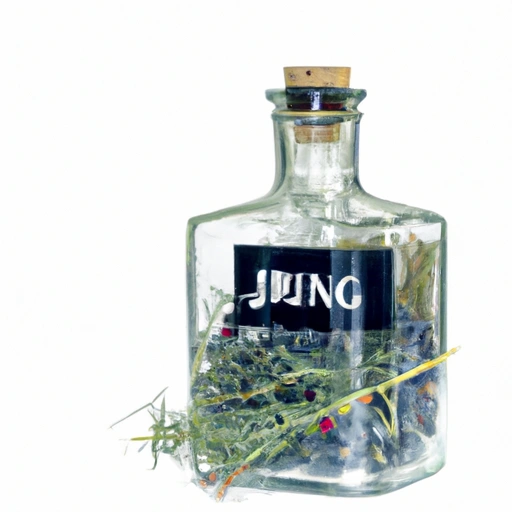Gin
Description

Gin is a distilled alcoholic beverage that derives its predominant flavor from juniper berries (Juniperus communis). It is a versatile spirit that is often used in cocktails but can also be a unique addition to various food recipes. Gin typically contains 40-50% alcohol by volume (ABV), and its distinct botanical flavor profile lends itself to both sweet and savory dishes. When cooking with gin, it's important to consider the balance and harmony of flavors it can bring to a dish.
Common uses
Gin is most commonly used as a base spirit in cocktails. Some of the most famous gin cocktails include the Martini, the Gin and Tonic, and the Negroni. Its herbal and citrus notes make it a versatile ingredient for mixing with a wide range of flavors. In culinary practices, gin is sometimes used to infuse foods with its unique taste or to deglaze pans in the creation of sauces.
Nutritional value
Calories
Gin is calorie-dense due to its alcohol content. It provides about 97 calories per 1.5 oz serving (approx. 44 ml or 3 tablespoons).
Protein
Gin contains no proteins.
Fat
Gin contains no fats.
Carbohydrates
Gin contains no carbohydrates, sugar, or fiber.
Vitamins
There are no vitamins in gin.
Minerals
Gin does not contain minerals.
Health benefits
While gin is an alcoholic beverage and should be consumed in moderation, it is low in sugar and free from carbohydrates, fats, and proteins, which may be beneficial for those on certain diets. The juniper berries used in gin production are rich in flavonoids and antioxidants, which can have positive health effects, although these are likely to be minimal due to the distillation process and the small quantities typically consumed.
Potential risks
As with all alcoholic beverages, excessive consumption of gin can lead to health problems including liver disease, addiction, and negative effects on mental health. It should be consumed responsibly, and not at all by those with alcohol intolerance, pregnant women, or individuals who are unable to consume alcohol for health or personal reasons.
Common recipes
Gin can add a surprising twist to recipes such as marinades for meats, seafood dishes, and fruit-based desserts. It can also be used in the preparation of certain sauces and glazes, or to provide an aromatic lift to soufflés and other baked goods.
Cooking methods
When used in cooking, gin is often added to recipes that are simmered or flambéed, allowing the alcohol to cook off and the flavors to concentrate. It can also be included in recipes where it is infused into other ingredients, such as in pickling or in making compound butters.
Pairing with other ingredients
Gin pairs well with a variety of flavors including citrus, herbs like rosemary and basil, as well as with sweeter elements like berries and cucumber. Its botanical characteristics can complement both the savory depth of meat dishes and the fresh, sweet elements of fruit-based desserts.
Summary
Gin is a distinctive spirit known for its juniper-forward flavor profile and its role in classic cocktails. With a rich history and diverse applications in both mixology and gastronomy, gin has remained a beloved ingredient worldwide. Its use in cooking is less common but can introduce an exciting array of flavors to dishes. As an alcoholic beverage, it should be used judiciously and enjoyed responsibly to minimize potential health risks.